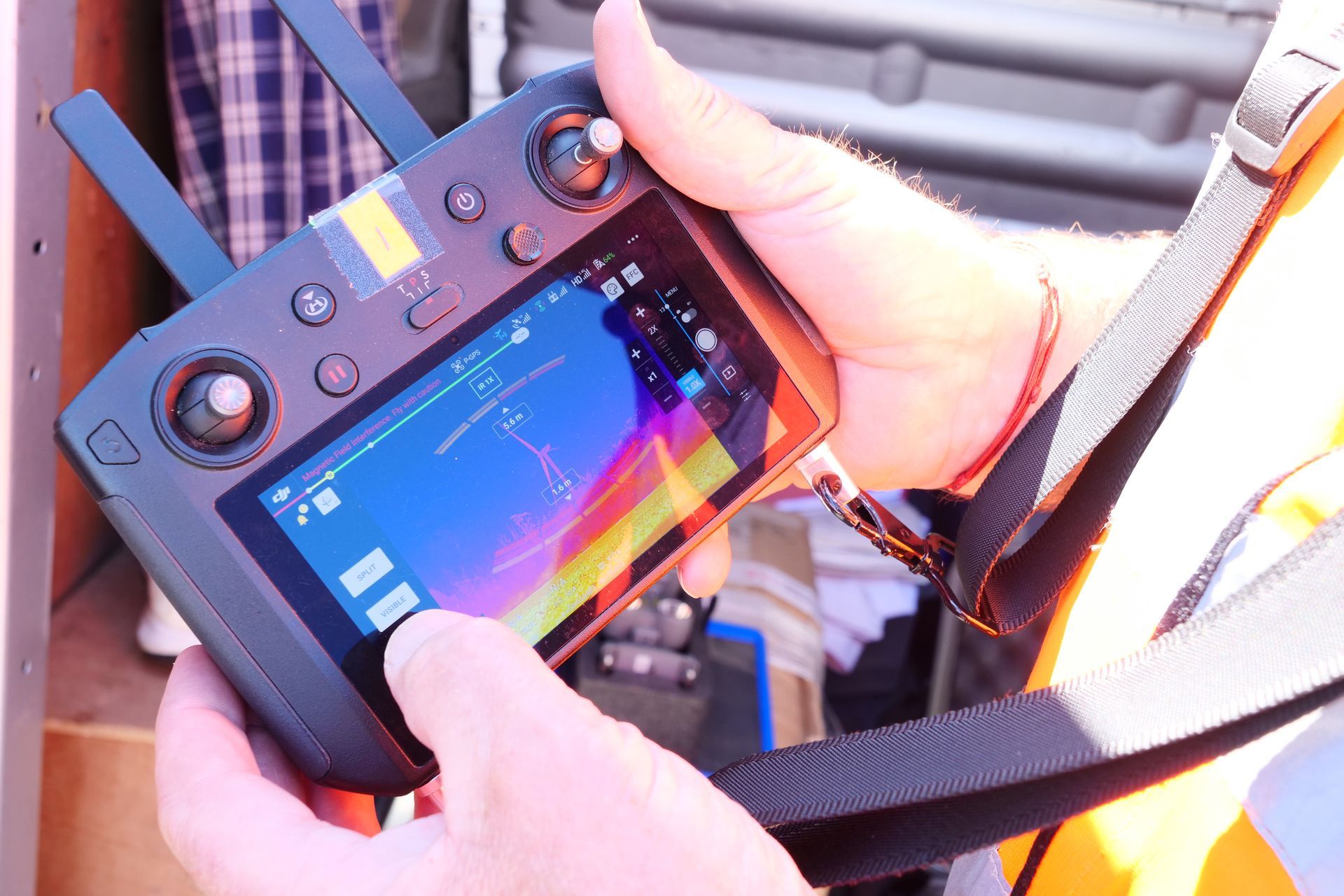Thermal Drone Surveys for Building Inspections in Yorkshire

Thermal imaging has revolutionised how we inspect and maintain buildings across Yorkshire.
When this technology is combined with drone capabilities, it creates a powerful diagnostic tool that can identify issues invisible to the naked eye. This comprehensive guide explores how thermal drone surveys are transforming building inspections and maintenance.
Understanding Thermal Drone Technology
Thermal imaging cameras detect infrared radiation (heat) and convert it into a visible image. Unlike standard cameras that capture reflected light, thermal cameras visualise temperature differences across surfaces, revealing patterns that indicate various building conditions.
When mounted on drones, these specialised cameras can:
- Capture large areas quickly and efficiently
- Access difficult or dangerous locations safely
- Document entire building envelopes from multiple angles
- Create comprehensive thermal maps of properties
The resulting thermal images use colour gradients to represent temperature variations, with warmer areas typically appearing as yellows, oranges, and reds, while cooler areas show as blues and purples.
Key Applications for Yorkshire Properties
Energy Efficiency Assessment
With rising energy costs and increasing focus on sustainability, identifying heat loss in buildings has become a priority for property owners across Yorkshire.
Thermal drone surveys excel at detecting:
- Inadequate or deteriorated insulation
- Thermal bridging through structural elements
- Air leakage points around windows and doors
- Heating system inefficiencies
- Roof heat loss patterns
These insights allow property owners to target energy efficiency improvements precisely, maximising return on investment while reducing carbon footprints.
Moisture Detection and Damage Prevention
Water ingress can cause significant damage to buildings before becoming visible internally. Thermal imaging can detect moisture issues early by identifying temperature anomalies associated with water presence.
Common moisture-related findings include:
- Roof leaks and membrane failures
- Damp penetration through walls
- Condensation risk areas
- Plumbing leaks affecting building fabric
- Rising damp patterns
Early detection through thermal surveys can prevent minor issues from developing into major structural problems, saving Yorkshire property owners thousands in potential repair costs.
Electrical System Inspection
Overheating electrical components present serious fire risks. Thermal imaging can identify abnormal heat signatures in electrical installations before they fail.
Thermal surveys commonly detect:
- Overloaded circuits
- Loose connections
- Faulty distribution boards
- Overheating transformers
- Problematic junction boxes
For commercial and industrial properties in Yorkshire, this application alone can justify the cost of regular thermal drone surveys as part of preventative maintenance programmes.
Structural Assessment
Temperature differences can sometimes reveal hidden structural issues or changes in building materials that warrant further investigation.
Thermal imaging may highlight:
- Cracks and structural weaknesses
- Areas of different building materials
- Previous repairs or modifications
- Thermal stress patterns
- Delamination in composite structures
While thermal imaging alone cannot provide definitive structural analysis, it serves as an excellent screening tool to direct more detailed investigations.
The Thermal Survey Process
Pre-Survey Planning
Effective thermal surveys require careful planning to ensure optimal conditions:
- Surveys are typically conducted during early morning or evening when temperature differentials are greatest
- Weather conditions are monitored, as rain, strong winds, or direct sunlight can affect results
- Building systems (heating/cooling) may need adjustment before the survey
- Access requirements and flight paths are planned in advance
Data Collection
During the survey, the drone systematically captures thermal imagery of all relevant building surfaces:
- Multiple passes may be conducted at different heights and angles
- Both thermal and visual imagery is typically collected simultaneously
- Ground-based thermal images may complement aerial data for lower levels
- Real-time monitoring ensures complete coverage
Analysis and Reporting
The true value of thermal surveys lies in expert interpretation:
- Temperature patterns are analysed to identify anomalies
- Findings are correlated with building plans and history
- False positives are filtered out through experience
- Results are presented in clear, actionable reports
- Recommendations are prioritised based on severity and urgency
Complementary Survey Methods
For comprehensive building assessment, thermal drone surveys work best when combined with other inspection techniques:
Visual Drone Surveys Standard high-resolution imagery provides context for thermal findings and documents visible conditions. Aerial survey inspections capture detailed visual data that complements thermal information.
Matterport 3D Surveys Interior 3D scanning creates detailed digital twins of building interiors that can be correlated with external thermal findings.
Ground-Based Verification Targeted ground inspections can confirm issues identified through thermal imaging and provide additional diagnostic information.
Choosing the Right Thermal Survey Provider
When selecting a thermal drone survey provider in Yorkshire, consider these essential qualifications:
Technical Certification Look for operators with Category 1 Thermographer certification, ensuring they understand the science behind thermal imaging and can properly interpret results.
Aviation Compliance Verify that the operator holds proper CAA licensing and permissions for commercial drone operations.
Experience and Expertise Ask about specific experience with your building type, as different structures present unique thermal patterns and challenges.
Equipment Quality Enquire about the thermal camera specifications, as resolution and sensitivity significantly impact the quality of results.
Reporting Standards Review sample reports to ensure findings are presented clearly with actionable recommendations.
Thermal drone surveys represent a significant advancement in building inspection technology, offering Yorkshire property owners unprecedented insights into building performance and condition. By detecting issues before they become visible problems, these surveys enable proactive maintenance, energy efficiency improvements, and enhanced safety measures.
For commercial properties, industrial facilities, and larger residential buildings across Yorkshire, regular thermal drone surveys should be considered an essential component of comprehensive maintenance strategies. Contact Dee4Drones and let our drones solve your surveying issues.

